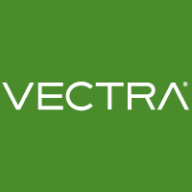

IBM Security Network IPS and Vectra AI compete in the network security space. IBM Security Network IPS has the upper hand in cost-effectiveness and customer service, while Vectra AI excels in advanced AI-driven threat detection.
Features: IBM Security Network IPS offers comprehensive intrusion prevention, threat intelligence integration, and real-time attack prevention. It supports centralized management via IBM SiteProtector, ensuring smooth integration with transaction systems. Vectra AI utilizes AI-driven technology for proactive threat detection and response, employing machine learning to identify threats early. Its feature set includes Cognito Recall and Cognito Detect, providing network visibility and aggregated risk scores for prioritizing threats efficiently.
Room for Improvement: IBM Security Network IPS could enhance its AI capabilities and improve analytical sophistication to match its competitors. Further development in threat detection precision and user interface could benefit IBM. Vectra AI could streamline its initial setup process and reduce dependency on user intervention for complex configurations. Efforts to minimize false positives and simplify fault rectification processes would enhance its overall performance.
Ease of Deployment and Customer Service: IBM Security Network IPS is appreciated for its straightforward deployment and extensive customer service, aiding in easy implementation. Vectra AI, while involving a more complex setup due to its advanced features, provides substantial support to overcome these complexities. IBM’s simplistic installation is a strong point, whereas Vectra's thorough post-deployment service optimizes its AI functionality.
Pricing and ROI: IBM Security Network IPS is known for a favorable pricing model and promising ROI, catering to various budgetary needs. Vectra AI, despite higher initial costs, delivers a significant long-term security ROI with its advanced threat detection, deemed worthwhile for organizations seeking innovation. Balancing upfront costs with cutting-edge features, Vectra provides substantial value over time.
| Product | Market Share (%) |
|---|---|
| Vectra AI | 8.0% |
| IBM Security Network IPS | 0.7% |
| Other | 91.3% |


| Company Size | Count |
|---|---|
| Small Business | 9 |
| Midsize Enterprise | 10 |
| Large Enterprise | 27 |
Vectra AI enhances security operations by pinpointing attack locations, correlating alerts, and providing in-depth visibility across attack lifecycles, ultimately prioritizing threats and improving incident responses.
Vectra AI integrates AI and machine learning to detect anomalies early and supports proactive threat response. Its features like risk scoring, alert correlation, and streamlined SOC efficiency are supplemented by integration with tools like Office 365. Users highlight integration, reporting, and customization challenges, alongside limitations in syslog data and false positive management. They seek enhancements in visualization, UI, TCP replay, endpoint visibility, and tool orchestration, with requests for improved documentation, licensing, and cloud processing innovation.
What are the key features of Vectra AI?In industries like finance, healthcare, and critical infrastructure, Vectra AI is crucial for threat detection and network monitoring. Entities use it for identifying anomalous behaviors and enhancing cybersecurity by responding to network activities and analyzing traffic for potential breaches. It operates on-premises and in hybrid cloud settings, enabling threat detection without endpoint agents and supporting compliance and policy enforcement.
We monitor all Intrusion Detection and Prevention Software (IDPS) reviews to prevent fraudulent reviews and keep review quality high. We do not post reviews by company employees or direct competitors. We validate each review for authenticity via cross-reference with LinkedIn, and personal follow-up with the reviewer when necessary.